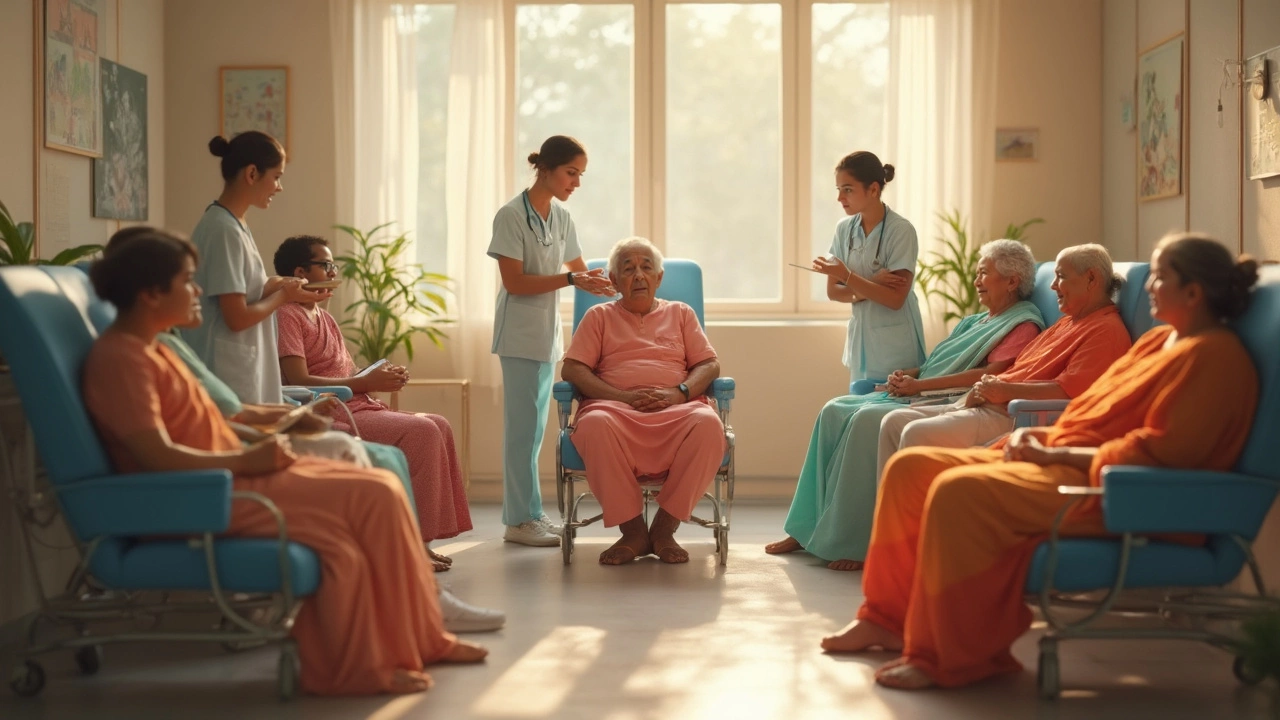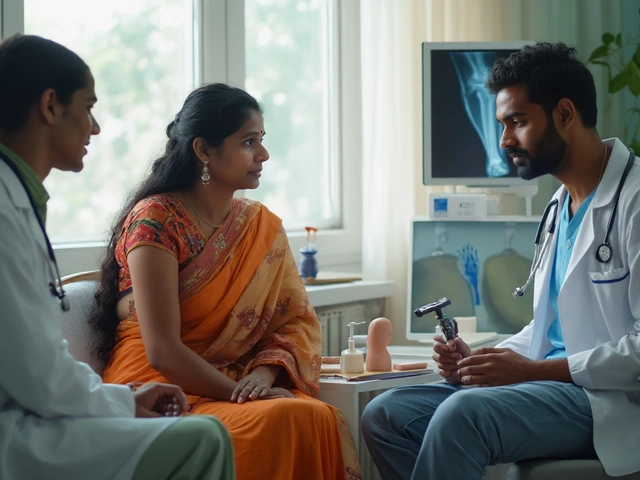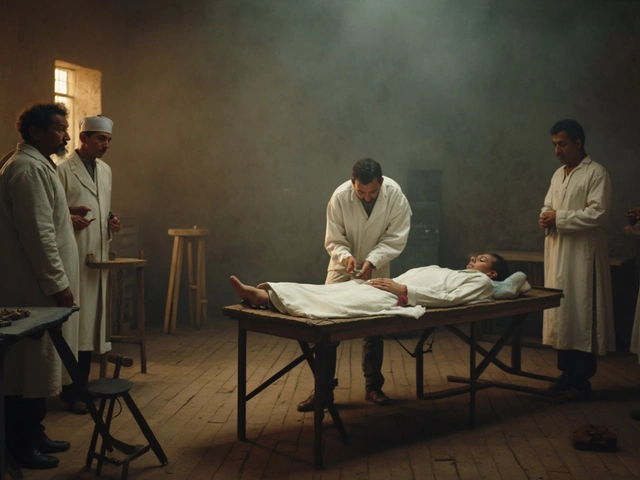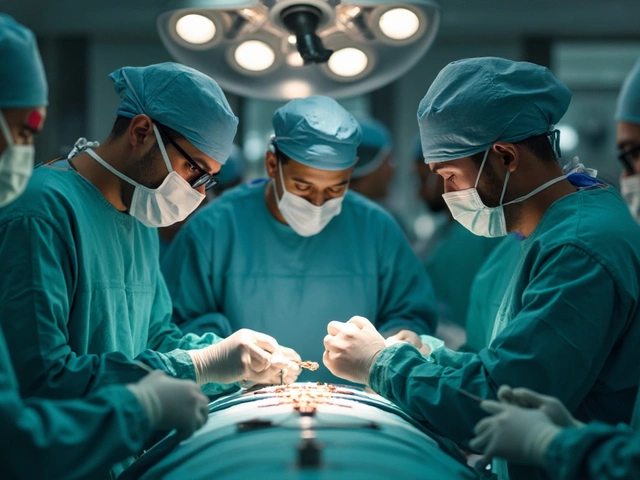If someone tells you they’re starting 4 rounds of chemo, what’s your gut reaction? For many, that number sounds either strangely small or worryingly large, depending on what you’ve read or seen in movies. The truth is, chemotherapy isn’t as simple as a set number. How much is ‘a lot’ is only clear when you peek into what chemo actually does, why schedules exist, and how the body behaves in response. Let’s unpack the reality of four rounds of chemo: where it lands on the map of cancer treatment, what it means for the person enduring it, and why numbers don’t tell the full story. Strap in, because cancer care isn’t a game of easy answers.
How Chemotherapy Rounds Are Planned
Chemo isn’t like popping a few pills and calling it a day—it’s a carefully designed assault on cancer cells. When doctors say "4 rounds," they’re talking about four distinct cycles of treatment. But what are these cycles, and why are they even split up? Each round is a period where drugs are given, often over one or a few days, followed by a rest period. This pattern isn’t random. The aim is to strike hard at the cancer, then give your body a breather to recover from the onslaught.
The duration of one round can vary. For some, it’s one day of drugs every three weeks. For others, it might involve several days in a row. The rest gap—usually two to four weeks—helps bone marrow, immune systems, and organs bounce back so they can handle the next hit. This ebb and flow have a method: cancer cells grow and divide quickly, but so do healthy cells that get caught in the crossfire. Doctors balance maximum cancer cell punishment with minimal long-term body harm.
So how do doctors settle on four rounds? It often boils down to what’s been proven to work through years of research. For example, early-stage breast cancer patients often get 4-6 rounds of AC (Adriamycin and Cyclophosphamide), while lymphoma regimens could stretch anywhere from 2 to 8 rounds, depending on subtype and stage. Pediatric cancers, like some leukemias, can see long protocols of 12 rounds or more. Every diagnosis is different, and what seems "a lot" for one type may be the minimum for another.
| Cancer Type | Typical Number of Chemo Rounds |
|---|---|
| Early-stage breast cancer | 4 to 6 |
| Hodgkin’s lymphoma | 2 to 8 |
| Testicular cancer | 3 to 4 |
| Colon cancer (adjuvant chemo) | 8 to 12 |
| Pediatric leukemia | Up to 12+ |
Doctors also tailor plans to the patient’s health—those with strong organs and stamina might tolerate longer treatments. Others, especially older folks or those with pre-existing conditions, often get shorter, less intense regimens. Four rounds might sound like nothing in the context of a long leukemia protocol, but for someone with a low-risk tumor, it can be just the right balance.
What Happens During Each Chemo Round?
Let’s get honest: nobody lines up for chemo thinking it’ll be a breeze. Each round of chemo is like running a gauntlet—not just once, but over and over. Here’s what usually goes down. You’ll show up to the clinic or hospital, likely with your favorite hoodie, snacks, maybe a playlist of motivating songs. Nurses will ask you a flood of questions about your last round: Did your mouth get sore? Did you run a fever? How’s your appetite? Your blood counts get checked—these little numbers are your ticket to treatment. Too low, and your round might have to wait.
Soon, it’s game time: the chemo drugs drip in, often through an IV in the arm or a port in your chest. Some people feel nothing; others sense a weird taste, an odd smell, or chills as the medicine flows. Most chemo sessions last anywhere between half an hour to several hours. The drugs themselves are quietly brutal: they skewer rapidly growing cells, so while they target cancer, they also clobber hair follicles, stomach lining, and blood cells by accident.
Once you finish the session, side effects don’t usually show up right away. Most people feel fine for a day or two. Then comes “chemo hangover”—nausea, tiredness, maybe fevers, mouth sores, or a weird metal taste in everything you eat. By the time you start feeling halfway human again, the next round looms closer. Multiply this rollercoaster by four, and you get a sense of why even "just" four rounds can be tough. Some weeks will flatten you; others, you’ll bounce back like nothing happened.
The in-between periods aren’t idle time either. Doctors monitor you for infections, check your liver and kidney functions, and tweak doses if the last batch hit you too hard. Patients often coordinate their lives in three-week blocks: feeling good? Run errands, see friends, chow down on favorite foods. Feeling lousy? Queue up for rest, ginger tea, anti-nausea meds, and all the streaming TV you can muster. There’s real strategy involved: people keep symptom diaries, try cold caps to save hair, or rely on anti-anxiety drugs to help them sleep before sessions. Every round is a test of patience and adaptability.
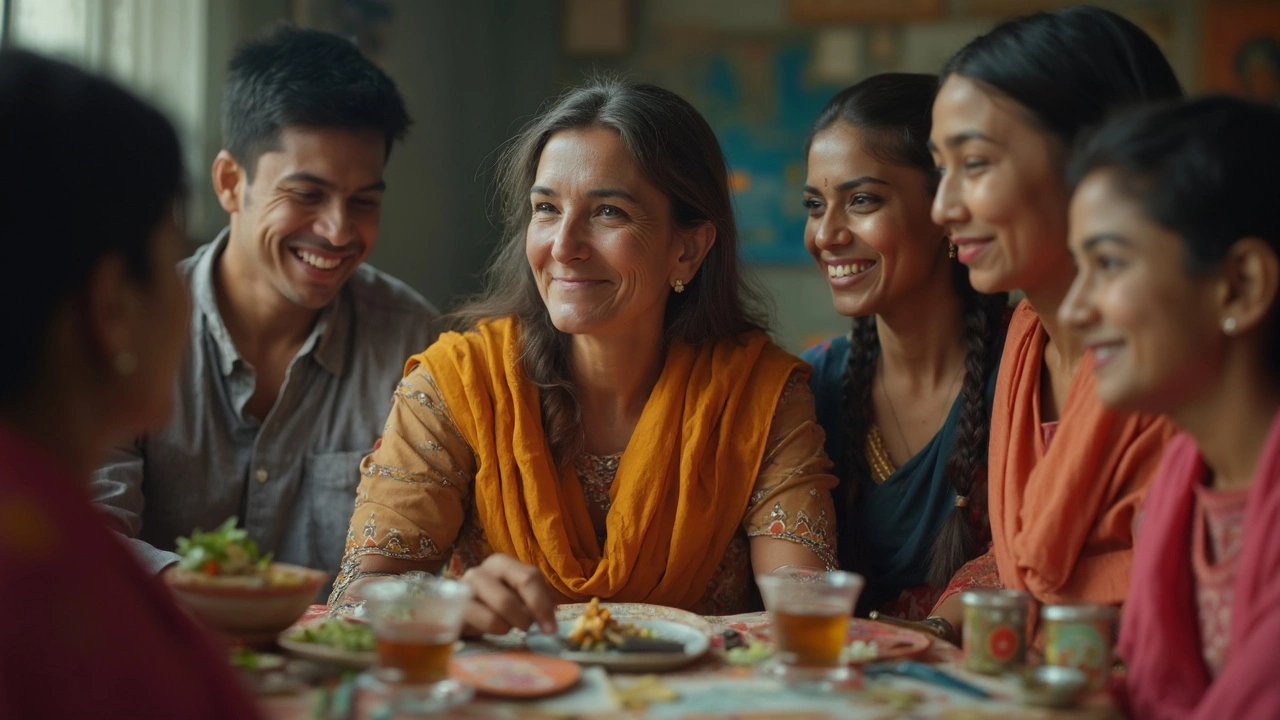
Is Four Rounds ‘A Lot’? Context Matters
When people ask if four rounds of chemo is a lot, it’s kind of like asking if four marathons is a lot—you can’t answer without the rest of the story. For example, a drug called cisplatin, used in testicular cancer, is so powerful that three or four rounds often cure most people outright. In other cancers, short chemo protocols are designed to catch cancer before it gets rooted, so fewer rounds fit the bill. But in late-stage or aggressive cancers, 4 rounds may be just the beginning.
According to a 2023 survey published in JAMA Oncology, patients with early-stage breast cancer who opted for four cycles of adjuvant chemo had similar five-year survival rates as those who received six cycles, but significantly fewer serious side effects. So for some, four rounds hit the sweet spot between effectiveness and manageability. But if you’re dealing with a stubborn or metastatic cancer, four rounds may be just one phase among several—chemo, radiation, then maybe targeted therapies or immunotherapy.
Then there’s the personal piece. Some folks sail through chemo with mild nausea and hair loss, while others get every unlucky ticket: infections, neuropathy, taste changes, memory fog, and more. The severity of side effects depends on the specific drugs, your genes, your fitness level, and even your gut bacteria. For one person, four rounds feels endless; for another, it’s just a blip on a much longer medical saga.
Here’s a wild but true fact: in some cases, reducing chemo rounds—say, from eight to four—doesn’t always hurt outcomes. Doctors are constantly weighing survival rates against quality of life. For example, certain colon cancer studies have found that 3 months’ treatment works nearly as well as 6 months, with half the nerve problems. This work is ongoing, and doctors might shift protocols as new evidence piles up. Don’t be afraid to ask your oncology team why your plan looks the way it does—they’ve usually based it on mountains of data for your exact type and stage.
Getting Through Chemo: Tips, Myths, and Good News
Ready for some practical wisdom? Chemo’s not a walk in the park, but you don’t have to slog through it blindly. People who make it through four rounds usually share a few strategies that help them cope.
- Chemo rounds are predictable, so plan your energy: tackle chores and errands early during the good days after each cycle.
- Keep bland foods like crackers, bananas, and rice handy—taste buds might turn traitor right after chemo.
- Hydrate! Water flushes out chemo byproducts and helps protect kidneys.
- Ask your doctor for anti-nausea meds (before you feel awful—they often work best preventively).
- Avoid crowds and wash hands often; the immune system takes a beating.
- Self-advocacy matters—if a side effect makes life miserable, speak up. There’s almost always some trick or med to help.
- Don’t tough it out alone. Lean on friends, join support groups, check out apps like CancerAid or CareZone to track symptoms and feelings.
- Sleep can go sideways. Consider meditation apps, soft music, or talking to your doctor about sleep aids if needed.
- Exercise gently if you can—walking or stretching can boost mood, appetite, and sleep quality.
One more potent tip: stay curious about your own numbers. Know your blood counts. Some people get obsessed, others ignore them, but it helps to be aware of trends—you may spot a problem before it gets serious. A 2022 study found people who kept logs of side effects and moods shared better details during doctor visits, which led to fewer delays and ER trips.
There’s hope, too. Chemo has come a long way. In the 1970s, cures were rare for many cancers. Now, thanks to targeted drugs and smarter schedules, the side effects are more manageable, and survival rates have climbed. Of course, chemo still isn’t fun—but four rounds is often enough to knock cancer back hard, especially when the protocol is modern and the care team is attentive.
At the heart of it, four rounds of chemo means something different for everyone who faces it. For some, it’s the toughest four months of their lives. For others, it’s a step toward feeling normal again. Staying informed, asking questions, and getting creative with self-care are the real keys to getting through each cycle and out the other side.
